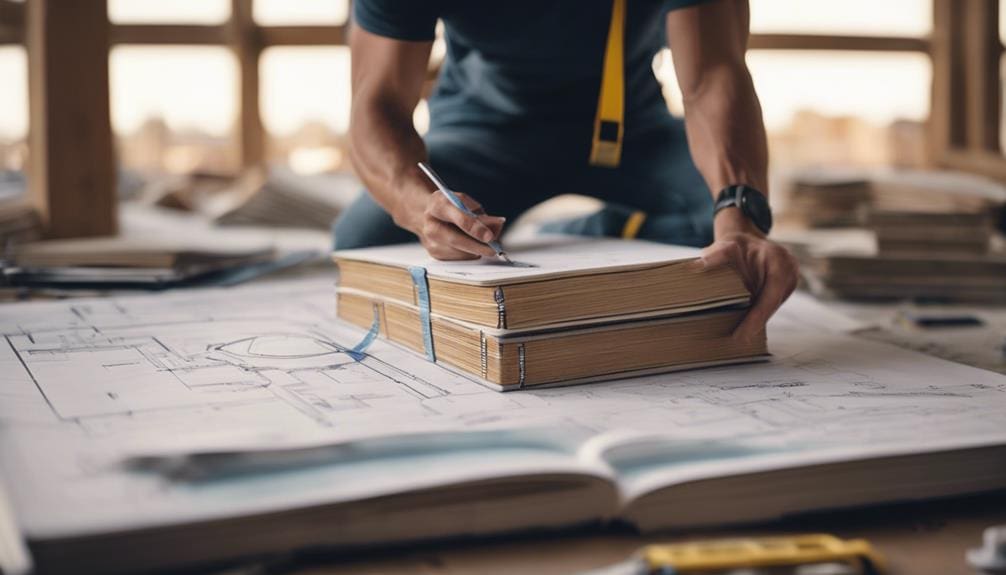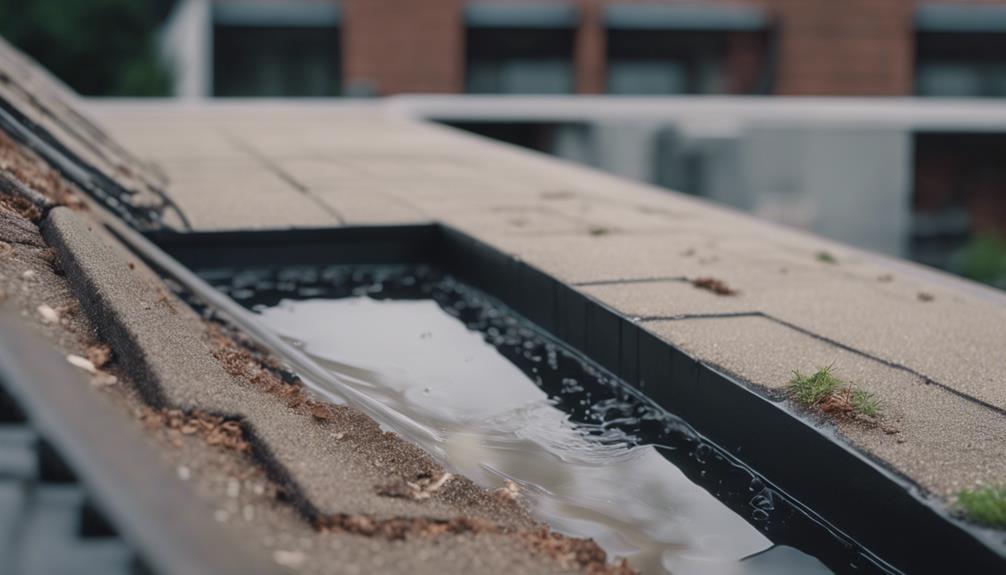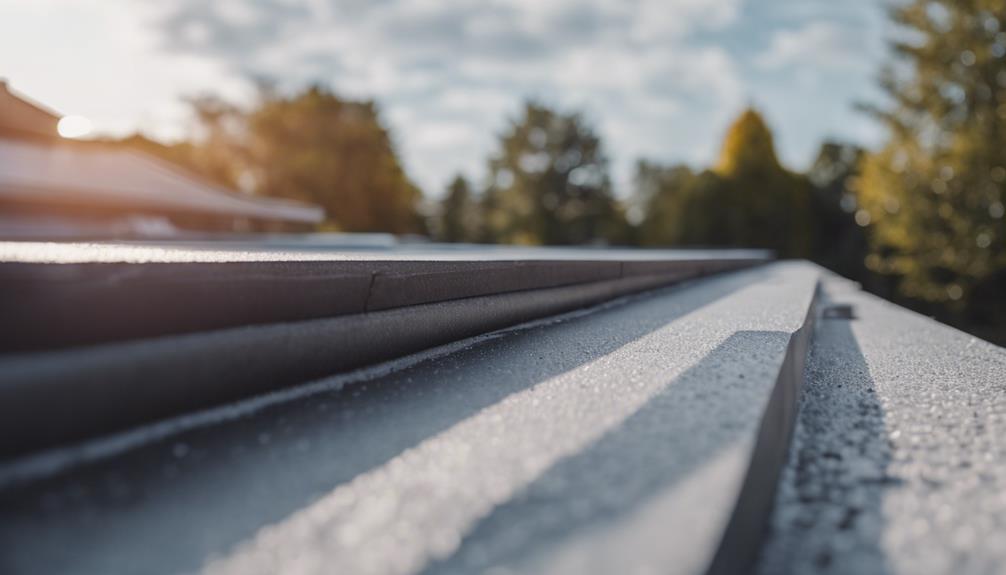When it comes to starting on a flat roof installation project, detailed planning is key to its success. From understanding building codes to choosing the right contractor, each step plays an important role in the overall outcome.
However, ensuring proper drainage design and carefully considering the roofing materials are equally important components that should not be overlooked. Additionally, creating a detailed project timeline is essential for keeping the installation process on track.
Stay tuned to discover more insights on how to effectively plan your flat roof installation and avoid common pitfalls that could impact the project’s final result.
Key Takeaways
- Adhere to building codes for safety and longevity.
- Choose a reputable contractor for quality installation.
- Design with effective drainage to prevent water issues.
- Select appropriate materials for durability and energy efficiency.
Understanding Building Codes

Understanding building codes is essential for ensuring compliance and safety in flat roof installation projects. Building codes are a set of regulations that specify the standards for construction, including materials, design, and installation processes. In the context of flat roof installations, it is critical to adhere to these codes to guarantee the structural integrity and longevity of the roof.
One key aspect of building codes related to flat roofs is the requirement for proper drainage systems. Flat roofs are more prone to water pooling, which can lead to leaks and structural damage if not adequately addressed. Building codes often stipulate the minimum slope or the installation of drains to make sure that water does not accumulate on the roof surface.
Furthermore, building codes also dictate the types of materials that can be used for flat roof installations. This is important as certain materials may be better suited for particular environmental conditions or building designs. By following the building codes related to materials, contractors can ensure the durability and efficiency of the flat roof system.
Selecting the Right Contractor
To guarantee the successful completion of a flat roof installation project, meticulous consideration in selecting the right contractor is paramount. When choosing a contractor for your flat roof installation, keep the following important points in mind:
- Experience: Look for a contractor with a proven track record in flat roof installations. Experience brings expertise, ensuring that the contractor is well-equipped to handle any challenges that may arise during the project.
- Reputation: Research the contractor’s reputation by reading reviews, asking for references, and checking their portfolio. A reputable contractor will have positive feedback from previous clients and a history of delivering high-quality work.
- Licensing and Insurance: Verify that the contractor holds all necessary licenses and insurance policies. This protects you from liability in case of accidents or damages during the installation process while also ensuring that the work meets industry standards and regulations.
Designing for Proper Drainage

Proper drainage design is a critical aspect of flat roof installation projects, ensuring water is effectively directed away from the roof surface to prevent pooling and potential damage. When designing for proper drainage on a flat roof, there are several key considerations to keep in mind.
To start with, the roof should have a slight slope to facilitate water runoff. This slope is typically at least a quarter of an inch per foot to guarantee proper drainage. Additionally, the placement of drains, scuppers, or gutters is essential to channel water away from the roof effectively. These drainage components should be strategically located in low points or along the edges of the roof where water tends to accumulate.
Moreover, the materials used in the construction of the roof should support good drainage. For instance, a membrane roof system can be installed with tapered insulation to create the necessary slope for water to flow towards the drains. Proper maintenance of drains and gutters is also critical to prevent blockages that can impede water flow.
Considering Roofing Materials
When selecting roofing materials for a flat roof installation project, the focus is on choosing options that not only provide durability but also complement the overall drainage design of the roof. Here are three key considerations to keep in mind:
- Material Durability: Opt for materials that are specifically designed for flat roofs to guarantee longevity and resistance to weather elements such as UV rays, rain, and snow. Common options include EPDM rubber, TPO, PVC, and modified bitumen.
- Drainage Compatibility: Choose materials that work seamlessly with the planned drainage system. Materials should facilitate proper water runoff to prevent ponding and potential water damage.
- Energy Efficiency: Consider roofing materials that provide insulation properties to enhance energy efficiency. Reflective coatings or incorporating insulation layers can help regulate indoor temperatures and reduce energy costs over time.
Creating a Detailed Project Timeline

Developing a thorough project timeline is an essential step in ensuring the successful execution of a flat roof installation project. A detailed timeline helps in coordinating various tasks, allocating resources efficiently, and maintaining project progress on track. Here is a sample timeline breakdown that can guide you through the flat roof installation process:
| Task | Timeframe |
|---|---|
| Roof Inspection | 1-2 days |
| Material Procurement | 1 week |
| Preparing the Roof | 2-3 days |
| Installation of Roofing | 1-2 weeks |
| Quality Checks | 1-2 days |
| Final Inspections | 1 day |
Frequently Asked Questions
Are There Any Specific Maintenance Requirements for a Flat Roof That Homeowners Should Be Aware Of?
Specific maintenance requirements for a flat roof include regular inspections for damage, debris removal, cleaning drains and gutters, checking for ponding water, and addressing any leaks promptly. Proper maintenance guarantees longevity and functionality of the flat roof.
How Can I Ensure That My Flat Roof Installation Will Be Energy-Efficient and Environmentally Friendly?
To guarantee energy efficiency and environmental friendliness in flat roof installation, consider using reflective roofing materials to reduce heat absorption, proper insulation to minimize energy loss, and incorporating green roof elements like vegetation to improve insulation and air quality.
What Are Some Common Issues or Challenges That May Arise During a Flat Roof Installation, and How Can They Be Addressed?
During a flat roof installation, common issues may include poor drainage leading to ponding water, improper flashing causing leaks, and inadequate insulation affecting energy efficiency. Address challenges by ensuring proper design, quality materials, skilled labor, and regular maintenance.
Are There Any Additional Costs or Factors to Consider When Installing a Flat Roof on a Commercial Building Versus a Residential Property?
When installing a flat roof on a commercial building compared to a residential property, additional costs and factors to take into account may include larger surface area, specialized materials for commercial use, potential zoning regulations, and increased maintenance requirements due to higher foot traffic and equipment installations.
Is There a Warranty or Guarantee Provided for the Flat Roof Installation, and What Does It Cover?
Typically, flat roof installations come with warranties or guarantees from the manufacturer or installer. These cover material defects, workmanship issues, and sometimes even labor costs for repairs within a specified period. It’s important to review and understand the terms of the warranty for clarity.